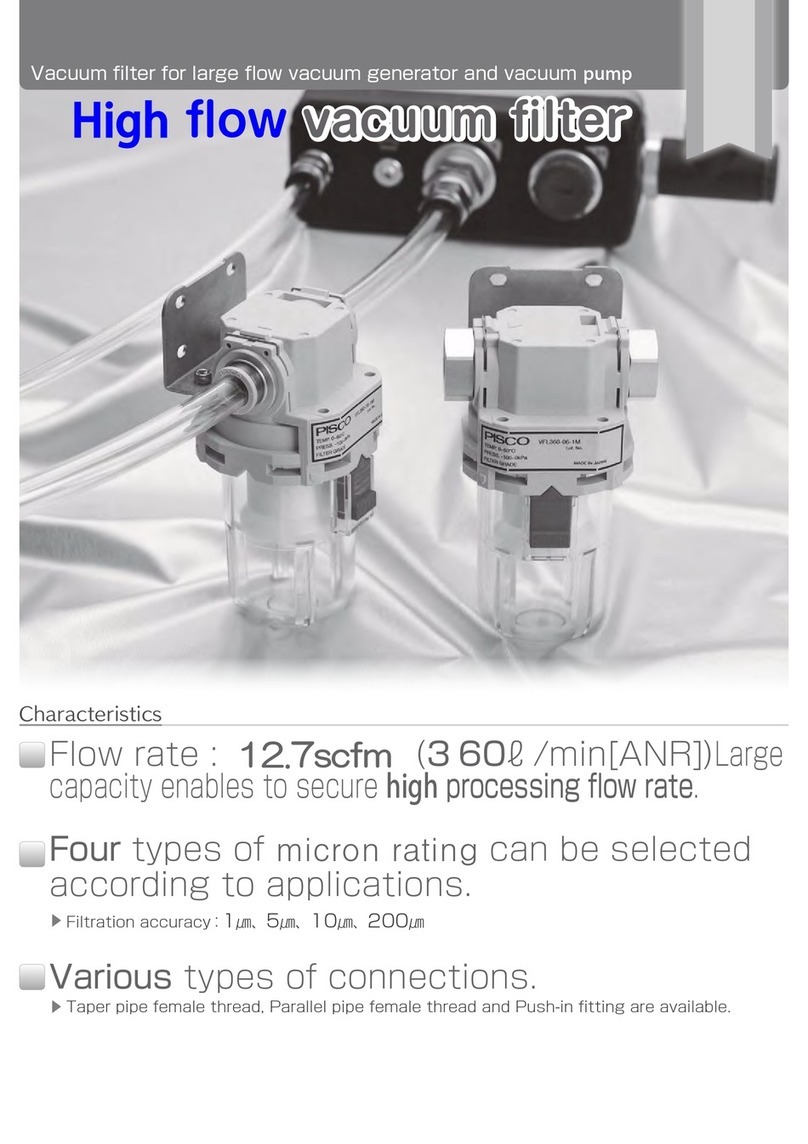
19
Safety Instructions
SAFETY INSTRUCTION MANUAL
Danger
1. Do not use PISCO products for the following applications.
① Equipment used for maintaining / handling human life and body.
② Equipment used for moving / transporting human.
③ Equipment specifically used for safety purposes.
Warning
1. Do not use PISCO products under the following conditions.
①
Beyond the specifications or conditions stated in the catalog, or the instructions.
② Under the direct sunlight or outdoors.
③ Excessive vibrations and impacts.
④
Exposure / adhere to corrosive gas, inflammable gas, chemicals, seawater, water and vapor. *
* Some products can be used under the condition above( ④), refer to
the details of specification and condition of each product.
2. Do not disassemble or modify PISCO products, which affect the
performance, function, and basic structure of the product.
3.
Turn off the power supply, stop the air supply to PISCO products, and make sure
there is no residual air pressure in the pipes before maintenance and inspection.
4.
Do not touch the release-ring of push-in fitting when there is a working pressure.
The lock may be released by the physical contact, and tube may fly out or slip out.
5. Frequent switchover of compressed air may generate heat, and there is a
risk of causing burn injury.
6. Avoid any load on PISCO products, such as a tensile strength, twisting
and bending. Otherwise, there is a risk of causing damage to the products.
7. As for applications where threads or tubes swing / rotate, use Rotary
Joints, High Rotary Joints or Multi-Circuit Rotary Block only. The other
PISCO products can be damaged in these applications.
8.
Use only Die Temperature Control Fitting Series, Tube Fitting Stainless SUS316
Series, Tube Fitting Stainless SUS316 Compression Fitting Series or Tube Fitting
Brass Series under the condition of over 60℃ (140°F) water or thermal oil. Other
PISCO products can be damaged by heat and hydrolysis under the condition above.
9.
As for the condition required to dissipate static electricity or provide an antistatic
performance, use EG series fitting and antistatic products only, and do not use other PISCO
products. There is a risk that static electricity can cause system defects or failures.
10. Use only Fittings with a characteristic of spatter-proof such as Anti-
spatter or Brass series in a place where flame and weld spatter is
produced. There is a risk of causing fire by sparks.
11.
Turn off the power supply to PISCO products, and make sure there is
no residual air pressure in the pipes and equipment before maintenance.
Follow the instructions below in order to ensure safety.
①
Make sure the safety of all systems related to PISCO products before maintenance.
②
Restart of operation after maintenance shall be proceeded with care after
ensuring safety of the system by preventive measures against unexpected
movements of machines and devices where pneumatic equipment is used.
③ Keep enough space for maintenance when designing a circuit.
12. Take safety measures such as providing a protection cover if there is a
risk of causing damages or fires on machine / facilities by a fluid leakage.
PISCO products are designed and manufactured for use in general industrial
machines. Be sure to read and follow the instructions below.




























